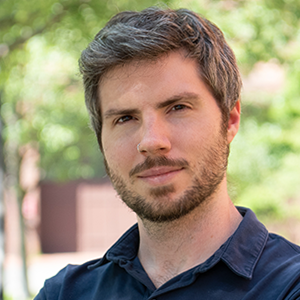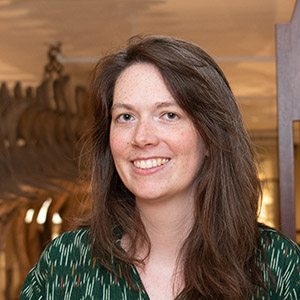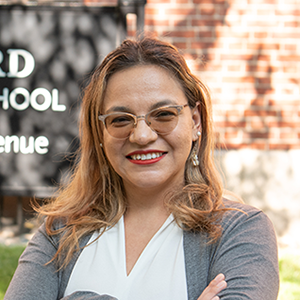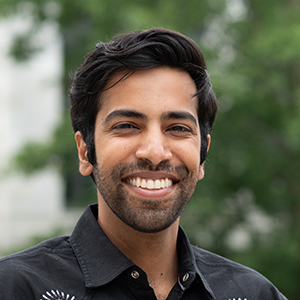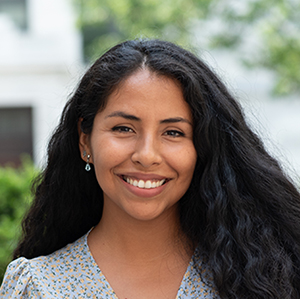Hannah Farnsworth
Graduate Student Lab of Humsa Venkatesh,
Brigham and Women's Hospital and Harvard Medical School
In the past, primary brain tumors were viewed as diseases that merely invade and destroy brain tissue. However, researchers now recognize that these tumors actually integrate into the brain’s circuitry as they grow and progress. Building on these insights, my research aims to uncover how brain tumors integrate into neural networks and influence cognitive processes such as learning and behavior.
Luis E. Boero
Postdoctoral Fellow Lab of Venkatesh Murthy,
Harvard University
Smoke, fresh-baked pie, rotten food, a floral cologne — at least once in your life (probably more), you’ve smelled one of these and tried to figure out where it came from. In each case, you can imagine an odor trace that travels through space and time until it reaches your nose, and your olfactory system detects it. But in natural environments, wind and other factors break up these odor traces (or “plumes,” as we call them) into signals that are sparse and highly fluctuating — nothing like the steady, delicious gradient of pie smell when you walk into a bakery. My work aims to understand how animals integrate this noisy odor information over time to figure out where an odor is coming from — and more specifically, which brain areas are involved, and how neurons in those areas weigh odor information to make these estimations.
Kelsey Tyssowski
Research Associate Lab of Hopi Hoekstra,
Harvard University
I study how mammalian nervous systems evolved to generate complex movements like hand dexterity. I compare deer mice (the mice that are native to North America) from forests, which are good climbers and very dexterous, to those from prairies, which are not as good at climbing. I’ve found that the forest mice have a larger number of a specific type of neuron in their cortex. This is exciting because we think that evolutionary expansion of the cortex is important for humans’ skilled movement, like dexterous tool use, but we don’t really understand what having more neurons does for the brain. Our discovery about brain differences in the dexterous mice gives us a starting point for answering that question!
Angélica Torres-Berrío
Assistant Professor, Harvard Medical School;
Director of Social and Cognitive Research at the Lurie Center for Autism
Mental health disorders are currently on the rise, especially among children and young people, and early life stress is an important contributor. A central question guiding my research is: Why do some individuals develop mental health conditions following early life stress, while others remain resilient? To explore this, I use mouse models to examine how stress impacts the brain across the lifespan. My goal is to identify the molecular mechanisms that drive vulnerability in some individuals and to discover ways to enhance resilience.
Akshay Jaggi
MD-PhD Student in Program in Neuroscience Lab of Christopher Harvey,
Harvard Medical School
Neuromodulators, like dopamine and serotonin, are chemicals that are released throughout the brain in a coordinated fashion and are thought to serve specific roles, like dopamine in reward processing. Neuroscientists have historically studied these neuromodulators in isolation, but that is like listening to just a trombone to understand the symphony. Our brains are an ever-evolving mixture of these chemicals shaping and being shaped by the actual firing of our neurons. My thesis work aims to develop methods to measure multiple neuromodulators in concert with neural activity and use these tools to understand how neuromodulators interact to shape neural activity in both health and disease.
Dianna Hidalgo
Graduate Student Lab of Gabriel Kreiman,
Boston Children's Hospital
I study how the brain makes sense of what we see, using artificial neural networks and animal models. In both the brain and in visual neural networks, different areas can process different parts of visual scenes (one area processes edges, another colors, motion, etc.). In artificial neural networks, I study how these areas develop, learn and are robust to lesions, while in mouse and macaque models, I study how these areas interact and communicate with each other across different contexts.
Image Credit:
MERFISH image of the human brain, showing RNA molecules expressed from 4,000 genes by various colors in individual cells. Image courtesy of Rongxin Fang (Lab of Xiaowei Zhuang, Harvard).


